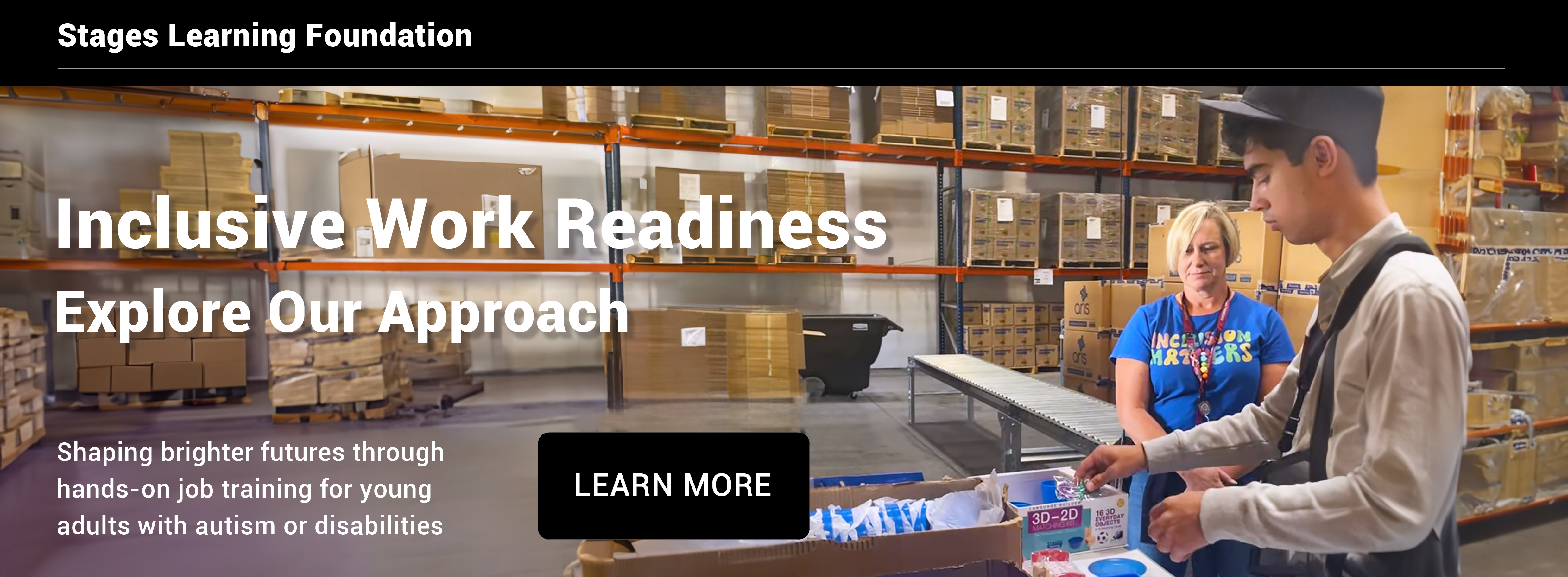What Works? Evidence-Based Transition Services
As autistic students transition from adolescence to adulthood, it is important that the transition services they access are evidence-based. Researchers have carefully reviewed and devised recommendations for services demonstrating the most effectiveness for helping autistic students transition into adulthood.
The following is a list of strategies that have shown the most promise in helping young autistic people succeed in the adult world.
Successful School Support Services to Increase Students’ Skills and Engagement
Check and Connect
Check and Connect was found to increase school engagement. This app offers a way for student mentors, teachers, and other school staff to collaboratively track student progress throughout the week and provide guidance as needed.
EnvisionIT
This curriculum was found to support information technology skills. This is a free, teacher-guided curriculum that provides middle- and high-school students with skills needed for workplace success, including financial literacy and transition planning and success.
Self-determined learning model of instruction
This model of instruction increased self-determination skills. This model includes first teaching a student important skills associated with self-determination, including choice-making, decision-making, problem-solving, goal-setting, planning, and goal-attainment. After these skills are taught, the student is provided with opportunities to practice those skills and strengthen them. Supports and accommodations are provided as necessary for the student to be successful in practicing those self-determination skills.
Take Charge Curriculum
This curriculum was used to teach self-determination skills, knowledge and engagement in educational planning, and persistence in school. During the course of a year in this curriculum, students are paired with a mentor whom they meet weekly, and a group of peers also going through the transition process, with whom they engage in both educational and recreational activities.
Simulation
Simulation (i.e., practicing the actual tasks needed for transition, but in a simulated or pretend setting) is used to teach basic finance (purchasing with a debit card, tracking expenses, deposits, and financial decision-making).
Mentoring
Mentoring increased STEM activity engagement, STEM career planning confidence, career planning, STEM, and disability self-efficacy.
Peer-assisted instruction/support
Peer-assisted instruction and support increased social interactions. Peers are employed in a variety of ways to mentor or guide students through the transition process, providing feedback and support about the social skills (and other skills) needed to successfully transition.
Video modeling
Video modeling was utilized to teach interviewing skills, food preparation, fine motor office tasks, the use of an iPad and iPhone, and leisure skills (e.g., basketball, puzzles, and entertaining guests).

Successful Parent Support Interventions
Parent training
Training increased parent knowledge of transition services for parents to be able to serve as better advocates and coaches to their transitioning child.
Multimodal anxiety and social skills intervention (MASSI)
This intervention increased social responsiveness. This is a treatment format that involves parent guidance, individual and group components, and focuses on creating corrective positive social experiences through the use of frequent practice of situations that may be difficult or anxiety-provoking, and coaching/feedback about how to handle those situations in more successful ways.
Successful Workplace and Community Interventions and Programs
Project SEARCH
Project SEARCH improved employment status, hours worked, benefits, and adaptive behavior. This curriculum provides a unique blend of instruction about transition as well as an immersive experience. Although some didactic material is provided regarding job skills and workplace success, all of these take place in the work setting, where the student also is given opportunities for internships.
One-more-than strategy
This intervention increased student independence in purchasing. This particular intervention is specifically to teach monetary understanding and use. In essence, a student is taught how to have the right amount (of cash) for a purchase by figuring out what is “one more [dollar] than” what the item costs, or the next whole dollar amount. For example, if something costs $5.27 and I pay $5, I won’t have given enough money. However, if I paid $6, then I paid enough. The goal is to round up to the next dollar so that the student is effective at making purchases.
Community-based instruction
Community-based instruction increased purchasing skills, social behaviors (e.g., asking for help, saying thank you, requesting information, greeting the cashier, saying goodbye), and safety skills (e.g., crossing the street, using a cell, or paying phone).
Response prompting
This strategy, used often in Applied Behavior Analysis (ABA) and other behavioral interventions, was used to improve grocery shopping skills. Within response prompting, initially, the person providing the prompts provides them frequently so the learner can learn the task quickly and correctly. Then the teacher fades the prompting so the person continues to perform the task correctly, but more and more independently until prompts are no longer needed at all.

Person-centered planning
Person-centered planning increased future expectations. In person-centered planning, a team of people works collaboratively to plan a student’s transition, but with a focus on the student’s goals and hopes for the future rather than any externally imposed goals.
Self-management instruction
Self-management instruction was found to improve communication skills, vocational tasks, and social skills. Within a self-management program, students monitor their own behavior and reinforce themselves when they’ve engaged in the target behavior.
Working at Gaining Employment Skills (WAGES)
This curriculum increased social skills and occupational skills. This is a 33-session curriculum that systematically teaches students skills needed for the workforce, and includes additional practice experiences to prepare for employment, like practice interviewing, and opportunities to shadow someone on the job in a career of that student’s interest.

Successful IEP-Related Support
Self-advocacy strategies
Self-advocacy strategies increased student involvement in the IEP. This curriculum provides students with the skills needed to be ready to participate actively in their IEP meetings, including listing their perceived strengths, areas where they need to improve, their goals for employment, post-secondary learning, and study, as well as the accommodations they need to be successful in the transition process.
Self-directed IEP
This curriculum increased student involvement in the IEP and self-determination skills. This is a curriculum designed with teacher support for students to gain a better grasp of the IEP process and therefore engage more in creating the IEP including goals, accommodations, etc.
Communication interagency relationships and collaborative linkages for exceptional students (CIRCLES)
This model increased self-determination skills and participation in the IEP. CIRCLES is a transition-planning service delivery model that guides collaboration for the development of a student’s IEP between a community-level team, a school-level team, and the IEP team. This collaboration is designed to not only ensure the most important goals are included in the student’s IEP (e.g., those involving transition) but also to include the student more meaningfully in the IEP meeting and process.
Student-directed transition planning lesson package
This was found to increase student knowledge of transition and self-efficacy, and therefore increase the student’s independence and central role in developing and following the IEP for transition planning.
Whose Future Is It? Plus, Rocket Reader
This was found to increase self-determination skills. The curriculum and self-guided workbook specifically help adolescents to learn about the IEP process and their role in it and provide them with practice activities to achieve an active role in setting and writing their own goals for transition as well as being an active part of the IEP meetings.
The following articles provided resources listed in this article:
Rowe, D. A., Mazzotti, V. L., Fowler, C. H., Test, D. W., Mitchell, V. J., Clark, K. A., Holzberg, D., Owens, T. L., Rusher, D., Seaman-Tullis, R. L., Gushanas, C. M., Castle, H., Chang, W., Voggt, A., Kwiatek, S., & Dean, C. (2020). Updating the secondary transition research base: Evidence- and research-based practices in functional skills. Career Development and Transition for Exceptional Individuals, 44(1). https://doi.org/10.1177/2165143420958674

Abby Peskin
Dr. Abby Peskin is a child psychologist from Miami, with a training emphasis in the treatment of disruptive behavior disorders in young children, focusing on intervention and assessment for Autism Spectrum Disorder. Her clinical background consists of specialized training in the diagnosis and treatment of both Autism and anxiety, including group, individual, and school-based treatment. She was drawn to child psychology because she genuinely loves working with children, and nothing delights her more than watching parents and their children get closer, watching their relationship get less stressful, and seeing parents increase their confidence and realize what amazing parents they can be.





